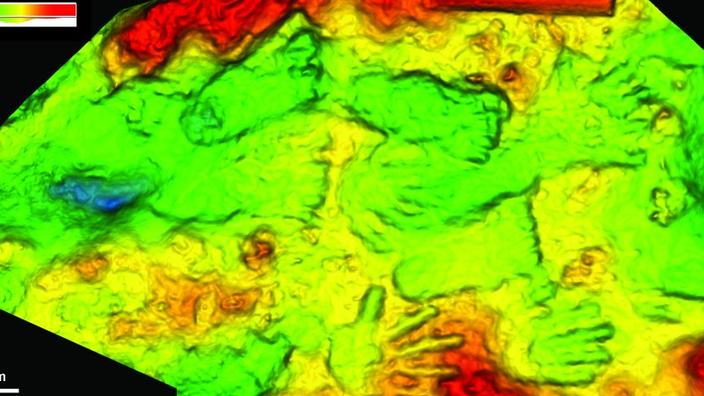Five hand and footprints were found in Quesang, on the Tibetan plateau, preserved in freshwater limestone deposited around a hot spring.
Early analysis establishes that the marks appear to have been neatly laid out by children between the ages of seven and twelve, judging by their size.
Read alsoContacts between Neanderthals, Denisovans and Homo sapiens enamelled by cultural exchanges?
The research was carried out jointly by teams from the University of Guangzhou, China, and the University of Bournemouth, United Kingdom.
According to the journal
Science Bulletin,
relays the official website of the British institution, archaeologists estimated that the traces dated from 169,000 to 226,000 years.
"The footprints may be the oldest example of cave art we have found to date,"
Matthew Bennett, professor of environmental and geographic sciences at the University of Bournemouth, part of the team at Bournemouth said in a statement. research.
"Frozen in time"
Before adding: "
You can imagine these children playing in the mud near a hot spring, carefully placing their hands and feet, in a place where they were kept for thousands of years before we did. found them. Like a child could in cement today. This mud-like clay hardened and turned into travertine
(limestone sedimentary rock, editor's note
), which froze these traces of the past in time.
"
The team dated the prints using a radiometric method based on the decay of uranium found in travertine. The dating sheds light on the first hominid occupation found to date on the Tibetan plateau. "
It's an incredible discovery
,
"
enthuses Dr Sally Reynolds, a paleoecologist at the University of Bournemouth who was part of the research team. Stunned, the one who studies the way of life of extinct species and the environment in which they evolved, estimates that "
the altitude of the site on the plateau
(above 4000m altitude, Editor's note)
suggests that the temperature there was very low and oxygen scarce.
It gives us clues to how people lived and interacted many years ago
”.
Read also In Australia, the oldest work of Aboriginal art represents a kangaroo
"
This remarkable discovery adds to the body of research that identifies children as some of the first artists of the genre Homo
" can be read in the journal
Science Bulletin
which offers the public on its site a more detailed account of this astonishing find.






